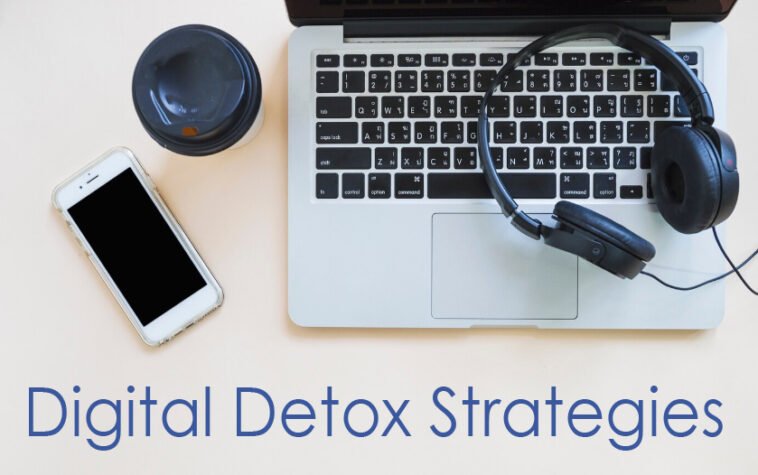Introduction
It is easy to be caught up in a never-ending stream of notifications, emails and social media updates in today’s fast digital world. Continual connectedness can result in stress or anxiety and even make an individual feel overwhelmed. However, through employing digital detox strategies, you can regain control of your life and facilitate mental well-being. This article will delve into the various effective tips as well as recommendations on how you can manage use of technology and cultivate mindfulness in your everyday activities.
Understanding Digital Detox
Digital detox refers to the process of switching off from electronic gadgets and platforms for a while allowing people to recharge, refocus and reconnect with the present moment. It means consciously reducing screen time by prioritizing real-life interactions over virtual ones.
Must Read: Men’s Health
Benefits of Digital Detox
- Enhanced Mental Health: Reducing screen time relieves stress, anxiety, and depression.
- Increased Productivity: Switching off from digital distractions helps one focus better, thereby leading to increased productivity.
- Sound Sleep Quality: Less blue light from screens can result in peaceful sleep without interruption.
Challenges with Digital Detox
Fear of Missing Out (FOMO): Many people are afraid that they might miss important notifications or events when they go offline on public networks
Dependency is defined as an overdependence on technology that can be difficult to entirely disconnect from.
Must Read: Lose Weight at Home
6 Digital Detox Strategies
Implementing digital detox strategies should not imply a total abandonment of the use of technology but rather achieving a balance. Here are few effective strategies you can incorporate into your daily routine:
Set Limits
Set specific times during which you are supposed to use these devices. For instance, assign “no screen zones” in your house like a dining table or bedroom where no digital gadgets are allowed at all.
Be Mindful About What You Consume
Before aimlessly scrolling through social media or checking emails, stop and ask yourself if it’s necessary and how it will contribute to your overall wellness. Limit your online consumption only to activities that are meaningful and that improve the quality of your life.
Must Read: Benefits of Breaking Your Sedentary Lifestyle
Participate in Offline Activities
Remember how nice it was to spend time out without using electronic devices? Rediscover the pleasure of such things as reading books, exercising, going for walks outdoors etc. Turn off the screens and do something that revives both mind and body.
Employ Digital Well-being Tools
Make good use of the pre-installed digital well-being functions in smartphones and other gadgets like tablets. You can also put restrictions on apps, enable their do-not-disturb modes as well keep track of the time spent on screens so as to know what impact it has had on them.
Be Mindful When You Meditate
To become more aware and reduce stress, incorporate mindfulness meditation into your daily routine. This requires you to sit quietly for a few minutes each day completely focused on your breath as well as observe your thoughts without the inclusion of any opinion.
Create Rituals without Tech
Have tech-free rituals at both ends of your day like beginning with a mindful walk in the morning or completing it with gratitude journaling. This will enhance better sleep patterns by disconnecting from screens before bed.
Must Read: Cosmetic Surgery
Conclusion:
Incorporating digital detox strategies into your life can lead to a more mindful and fulfilling existence. By setting boundaries, practicing mindfulness, and engaging in offline activities, you can reclaim control over your relationship with technology and prioritize your mental well-being.
Remember, a digital detox doesn’t have to be an all-or-nothing endeavor. Start small, experiment with different strategies, and find what works best for you. By embracing a more balanced approach to technology use, you can cultivate a greater sense of presence, peace, and happiness in your daily life.
FAQs (Frequently Asked Questions)
How long should a digital detox last?
A digital detox can last anywhere from a few hours to several days, depending on individual preferences and goals. Start with shorter detox periods and gradually extend them as you become more comfortable.
Is it necessary to completely disconnect from technology during a digital detox?
While complete disconnection is ideal for reaping the full benefits of a digital detox, it’s not always practical or feasible. The goal is to minimize screen time and prioritize real-world experiences.
What are some signs that indicate the need for a digital detox?
Signs that you may benefit from a digital detox include increased stress levels, difficulty concentrating, disrupted sleep patterns, and a constant urge to check your phone or social media accounts.
How can I overcome FOMO (Fear of Missing Out) during a digital detox?
To overcome FOMO, remind yourself of the benefits of disconnecting, such as reduced stress and increased presence. Focus on offline activities that bring you joy and fulfillment, and trust that you’re not missing out on anything truly meaningful.
Can digital detox improve my relationships?
Yes, digital detox can improve relationships by fostering deeper connections and meaningful interactions with loved ones. Limiting screen time allows you to be fully present and engaged during face-to-face interactions.
What role does mindfulness play in a digital detox?
Mindfulness is essential in a digital detox as it helps individuals become more aware of their digital habits and their impact on their overall well-being. Practicing mindfulness enables individuals to make intentional choices about their technology use.






